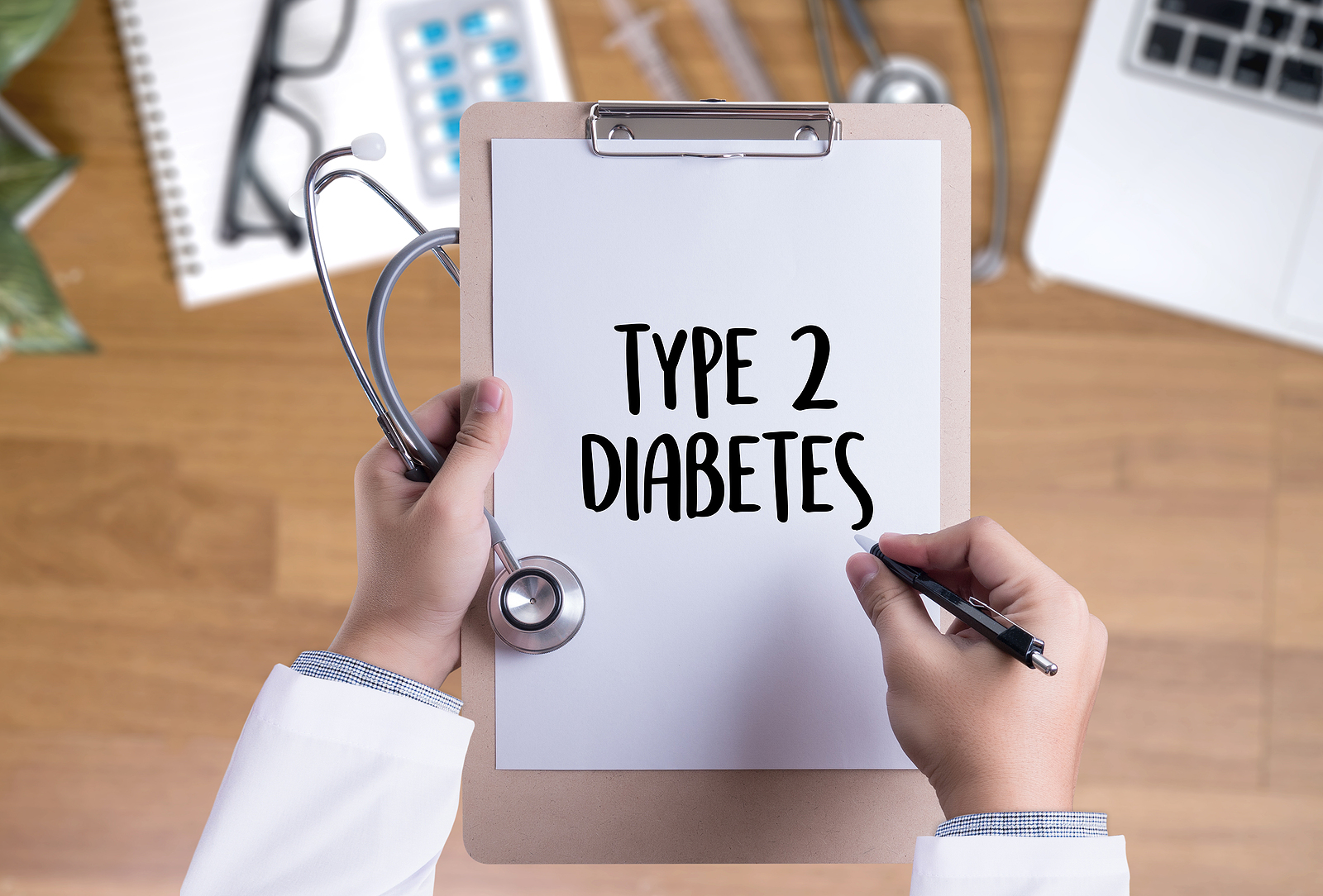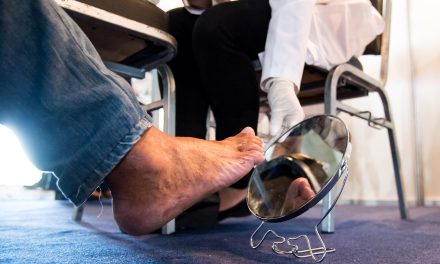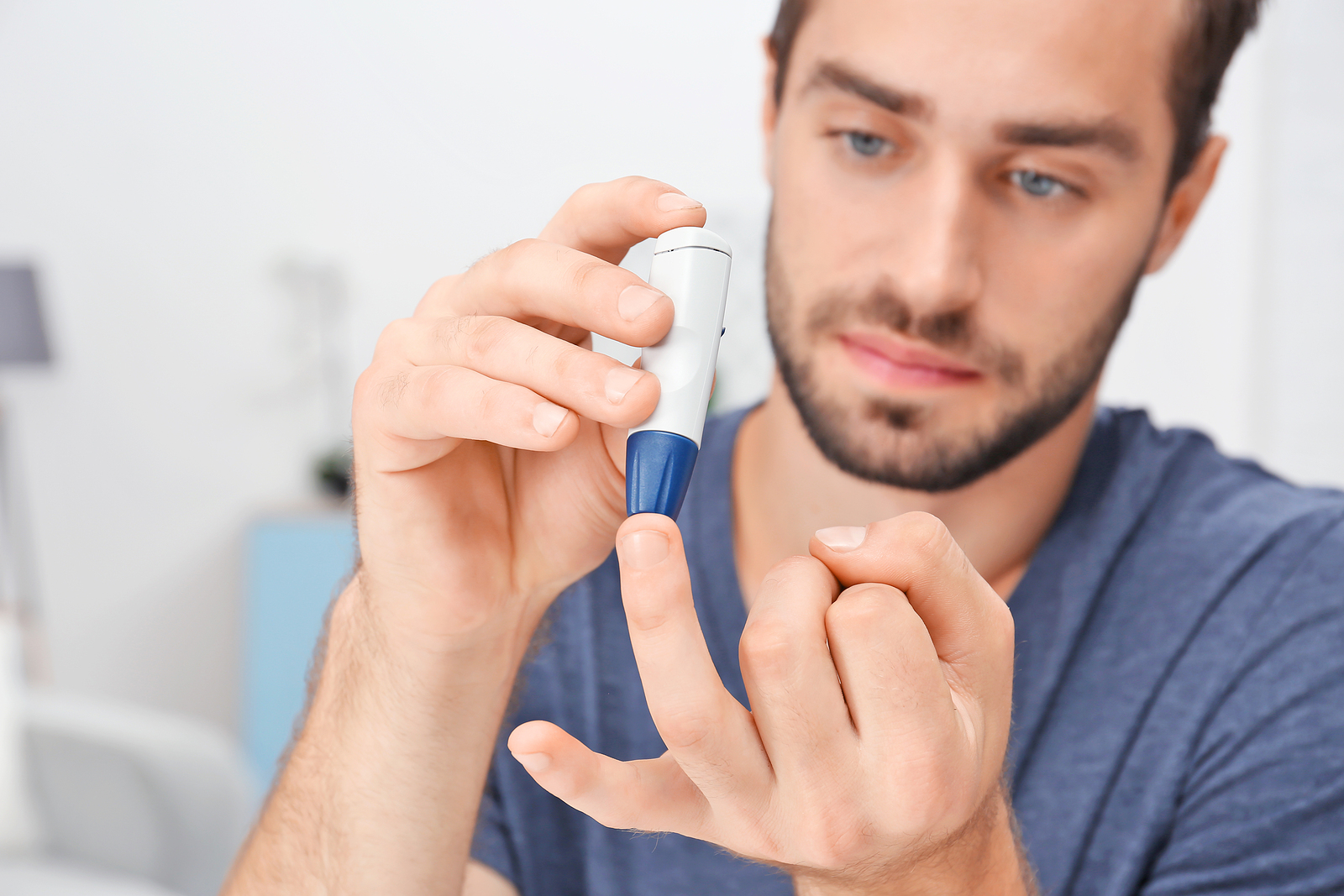Diabetes is a chronic condition affecting millions of people worldwide. Type 2 diabetes, in particular, is often seen as a lifestyle disease, primarily linked to poor diet and sedentary habits. Fortunately, there are ways to reverse diabetes permanently, focusing on healthier lifestyle choices and medical approaches.
Managing and reversing Type 2 diabetes requires a multifaceted approach, starting with changes in the patients’ diet and exercise routine. Additionally, monitoring blood sugar levels, taking prescribed medications as necessary, and consulting with healthcare professionals can all contribute to successful diabetes management and possible reversal over time.
Key Takeaways
- A combination of diet and exercise plays a crucial role in reversing Type 2 diabetes.
- Consistent monitoring and management of blood sugar levels are vital in achieving permanent diabetes reversal.
- Seeking professional support and resources enhances the effectiveness of lifestyle changes and medication plans.
Understanding Diabetes
Diabetes is a group of metabolic disorders characterized by high blood sugar levels over a prolonged period. There are two main types of diabetes: type 1 diabetes and type 2 diabetes.
Types and Causes
Type 1 diabetes is an autoimmune condition where the immune system mistakenly attacks and destroys insulin-producing beta cells in the pancreas. As a result, little or no insulin is produced, leading to an increased level of sugar in the bloodstream. The exact cause of type 1 diabetes is still unknown, but it is believed that a combination of genetic predisposition and environmental factors may play a role.
Type 2 diabetes is the most common form of diabetes and is mainly caused by insulin resistance, which means that the body’s cells become less sensitive to insulin and cannot effectively absorb glucose from the bloodstream. Possible factors contributing to insulin resistance include obesity, a sedentary lifestyle, and genetics. Over time, the pancreas struggles to produce enough insulin to compensate for the insulin resistance, resulting in high blood sugar levels.
| Factors | Type 1 Diabetes | Type 2 Diabetes |
|---|---|---|
| Insulin production | Little or none | Decreases over time |
| Causes | Autoimmune destruction of beta cells | Insulin resistance |
| Age of onset | Typically childhood or adolescence | Usually middle-age or older |
Symptoms and Diagnosis
Both types of diabetes can manifest with similar symptoms, including increased thirst, frequent urination, extreme hunger, unexplained weight loss, fatigue, blurred vision, and slow healing of wounds. If diabetes is suspected, a healthcare professional may perform a series of blood tests to confirm the diagnosis. The tests may include:
- Fasting plasma glucose test
- Oral glucose tolerance test
- A1C test (measures average blood sugar levels over a 3-month period)
Once a diagnosis is made, it is essential to carefully monitor and manage diabetes to prevent complications. Key aspects of diabetes management generally include healthy eating, regular physical activity, blood sugar monitoring, and potentially, the use of medication (such as insulin) or other medical interventions as prescribed by a healthcare provider.
Importance of Diet in Reversal
Foods to Eat and Avoid
A crucial step in reversing diabetes permanently is adjusting one’s diet. For people with type 2 diabetes or those at risk, it is essential to focus on consuming healthy foods that help regulate blood sugar levels. Some foods to eat include whole grains, fruits, vegetables, lean proteins, and healthy fats. On the other hand, it is essential to avoid or limit foods that contain refined sugars, saturated fats, and excessive carbohydrates.
- Eat: whole grains, fruits, vegetables, lean proteins, and healthy fats
- Avoid: refined sugars, saturated fats, excessive carbohydrates
Role of Carbohydrates and Sugars
Carbohydrates play a significant role in controlling blood sugar levels, as they are broken down into glucose during digestion. Consuming too many carbohydrates can lead to high blood sugar levels, a common issue in individuals with diabetes. To effectively manage diabetes, it is necessary to understand the distinction between simple and complex carbohydrates:
- Simple carbohydrates: Found in sugar-sweetened beverages, candies, and processed foods, these carbs can cause rapid spikes in blood sugar levels. It is essential to limit or avoid simple carbohydrates for better diabetes management.
- Complex carbohydrates: Found in whole grains, fruits, and vegetables, complex carbohydrates are absorbed more slowly, causing a gradual rise in blood sugar levels. They are preferable for individuals with diabetes.
Strive to minimize simple carbohydrates and focus on consuming complex carbohydrates.
Creating a Balanced Meal Plan
A balanced meal plan for diabetes management should emphasize portion control, a low-calorie diet, and incorporating a variety of healthy foods. Here are some tips for creating an effective meal plan:
- Include whole grains: Whole grains, such as brown rice, quinoa, and whole-wheat pasta, offer fiber and nutrients that help maintain stable blood sugar levels.
- Add lean proteins: Include protein sources like chicken, fish, or plant-based proteins to keep you full and satisfied without added dietary fat.
- Incorporate healthy fats: Fats found in avocados, nuts, and olive oil can help regulate blood sugar and contribute to overall health.
- Choose low-calorie options: Opt for fresh fruits and vegetables, as they provide essential vitamins and minerals without negatively impacting blood sugar.
A consistent and varied meal plan, focusing on whole, nutrient-dense foods and avoiding excessive carbohydrate consumption, is vital in reversing diabetes and maintaining blood sugar levels effectively.
Exercise for Managing Diabetes
Physical Activity Recommendations
Individuals with diabetes need to engage in regular physical activity as it plays a significant role in managing blood sugar levels and maintaining a healthy weight. Generally, it is recommended that adults with diabetes participate in at least 150 minutes of moderate-intensity aerobic exercise or 75 minutes of vigorous-intensity aerobic exercise per week. This can include activities such as brisk walking, swimming, cycling, or dancing. Additionally, incorporating muscle-strengthening practices, like weight lifting or resistance training, at least twice weekly can further improve blood sugar control and overall health.
Impact on Blood Sugar and Weight
Blood Sugar Levels: Exercise helps to lower blood sugar levels by increasing the body’s insulin sensitivity. This means that during and after physical activity, muscle cells can better utilize glucose from the bloodstream, leading to a decrease in blood sugar levels. However, individuals with diabetes need to monitor their blood sugar levels before, during, and after exercise to prevent hypoglycemia (low blood sugar) or hyperglycemia (high blood sugar).
Tips for managing blood sugar during exercise:
- Check blood sugar levels before and after exercise
- Carry a source of fast-acting carbohydrates (e.g., glucose tablets or fruit juice) in case of hypoglycemia
Weight Loss: Engaging in regular exercise can also contribute to weight loss, which is crucial for individuals with type 2 diabetes. Losing a modest amount of weight can improve insulin sensitivity and glycemic control, reducing the risk of diabetes-related complications. A healthy and sustainable weight loss can be achieved through a balanced diet and exercise program that includes both aerobic and muscle-strengthening activities.
Tips for effective weight loss through exercise:
- Choose activities that you enjoy and can maintain long-term
- Combine aerobic and muscle-strengthening exercises
- Set realistic goals and track your progress
In conclusion, exercise is a vital component of diabetes management, helping to regulate blood sugar levels and promote weight loss. By following physical activity guidelines and incorporating various exercises, individuals with diabetes can significantly improve their overall health and reduce the risk of complications.
The Role of Medication
When it comes to reversing diabetes, medications play a crucial role alongside lifestyle changes. Medications help manage blood sugar levels, reducing the risk of complications and improving overall health. This section will cover common medications used in diabetes treatment and give an overview of insulin therapy.
Common Medications Used
There are several medications available to help manage diabetes, including:
- Metformin: This is an oral medication, often considered the first line of treatment for individuals with Type 2 diabetes. Metformin helps the body use insulin more effectively, decreasing liver glucose production and increasing insulin sensitivity.
- Sulfonylureas: These drugs stimulate the pancreas to release more insulin, helping to lower blood sugar levels. Examples include glipizide, glyburide, and glimepiride.
- Thiazolidinediones: This group of medications, such as pioglitazone and rosiglitazone, work by increasing insulin sensitivity and reducing liver glucose production.
| Medication | Type | Mechanism of Action |
|---|---|---|
| Metformin | Oral medication | Increases insulin sensitivity |
| Sulfonylureas | Oral medication | Stimulates the pancreas to release more insulin |
| Thiazolidinediones | Oral medication | Increases insulin sensitivity |
It is important to note that medication regimens may vary depending on the individual needs and the type of diabetes.
Insulin Therapy Explained
Insulin is a hormone responsible for regulating blood sugar levels. Insulin therapy is crucial for individuals with Type 1 diabetes, as their bodies do not produce insulin. In some cases, people with Type 2 diabetes may also require insulin therapy if their blood sugar levels cannot be controlled with oral medications and lifestyle changes. Insulin therapy involves administering insulin injections or using an insulin pump to deliver the hormone directly to the body to maintain optimal blood sugar levels.
There are different types of insulin, classified by their onset and duration of action:
- Rapid-acting insulin: This type of insulin works quickly and is usually taken at mealtimes. It starts to work within 15 to 30 minutes and lasts for 3 to 4 hours.
- Short-acting insulin: Also known as regular insulin, this type works more slowly than rapid-acting insulin and typically lasts 6 to 8 hours.
- Intermediate-acting insulin: This takes longer to start working and lasts about 12 to 18 hours.
- Long-acting insulin: Designed to provide a slow, steady release of insulin, this type lasts for about 24 hours or more.
An individualized approach to insulin therapy is vital, as the type and dosage of insulin may vary depending on factors such as lifestyle, blood sugar levels, and other medical considerations. Working closely with healthcare providers is critical to achieving the best possible outcomes from insulin therapy.
Lifestyle Changes and Diabetes Management
Stress Reduction
Managing stress is a crucial aspect of reversing diabetes. Stress can elevate blood glucose levels, making diabetes control more challenging. Incorporate relaxation techniques such as deep breathing, meditation, and yoga into your daily routine. These practices can help lower stress levels and improve glucose control. Additionally, developing a strong support network, including friends, family, or support groups, can also contribute to stress reduction and better diabetes management.
Importance of Sleep
Getting adequate and quality sleep plays a significant role in managing diabetes. Poor sleep can affect insulin sensitivity and appetite regulation, leading to higher blood glucose levels. Aim for at least 7-8 hours of uninterrupted sleep per night. To improve sleep, establish a regular sleep schedule, create a comfortable sleep environment, and avoid caffeine, heavy meals, and electronic devices close to bedtime.
Smoking and Alcohol Considerations
Smoking is harmful to everyone but can be especially detrimental for those with diabetes. It can increase the risk of complications like heart disease, kidney disease, and nerve damage. Quitting smoking is crucial for better diabetes management and overall health. Numerous resources and support services are available to help you quit smoking.
Alcohol consumption should also be carefully considered. Moderate alcoholic intake may not cause significant harm, but excessive alcohol consumption can lead to high or low blood glucose levels, depending on the individual. Stick to recommended intake guidelines: one drink per day for women and two drinks per day for men. Always drink alcohol with a meal to help prevent low blood sugar.
In conclusion, adopting these lifestyle changes – stress reduction, quality sleep, and addressing smoking and alcohol habits – can significantly contribute to better diabetes management and potentially reverse diabetes permanently. Maintaining a healthy weight through diet and exercise is also essential in managing diabetes and preventing complications.
Monitoring and Testing Blood Sugar
Self-Monitoring Tips
Regularly monitoring your blood sugar levels is essential for successfully managing and reversing diabetes. By keeping track of your glucose levels, you can make informed decisions about diet, exercise, and medication. Here are some tips for effective self-monitoring:
- Choose the right glucose meter: Select a glucose meter that is easy to use and has a reliable track record. Many meters have useful features, such as memory storage and app connectivity.
- Test at consistent times: Check your blood sugar at specific times during the day, such as before meals and at bedtime, to obtain accurate and comparable results.
- Keep a log: Record your blood sugar levels along with relevant factors, such as food intake and physical activity, to help identify patterns and make necessary adjustments.
- Calibrate your meter: Regularly check your glucose meter’s accuracy by comparing its results with those from a laboratory test.
Understanding A1C Levels
In addition to daily blood sugar monitoring, an A1C test measures your average blood sugar level over the past 2-3 months. This test is crucial for assessing your diabetes management plan and identifying any necessary changes.
| A1C Level (%) | Interpretation |
|---|---|
| < 5.7 | Normal |
| 5.7 – 6.4 | Prediabetes |
| 6.5 or higher | Diabetes (on two separate tests) |
A1C levels can help you and your healthcare team set realistic blood sugar goals and monitor your progress. Lowering A1C levels through improved diet, exercise, and medication can significantly reduce the risk of diabetes-related complications.
It’s essential to regularly test and monitor your blood sugar and A1C levels as part of a comprehensive diabetes management plan. With consistent monitoring, a healthy lifestyle, and help from healthcare professionals, it’s possible to reverse diabetes and achieve optimal health.
Potential Complications of Diabetes
Diabetes can lead to various complications if not managed properly. This section will discuss both the short-term and long-term risks associated with diabetes and ways to prevent these complications.
Short-Term and Long-Term Risks
Short-term risks mostly revolve around blood sugar fluctuations, which can manifest as the following:
- Hypoglycemia, or low blood sugar, can lead to weakness, confusion, and even unconsciousness.
- Hyperglycemia or high blood sugar, can cause fatigue, excessive thirst, and frequent urination.
Long-term risks are more severe and involve damage to the body’s organs and systems. Some examples include:
- Blood vessels: Diabetes can lead to blood vessel damage, which increases the risk of heart disease, stroke, and peripheral artery disease.
- Eyes: Diabetes can lead to various eye problems, such as diabetic retinopathy, glaucoma, and cataracts.
- Kidneys: Diabetic kidney damage, also known as diabetic nephropathy, is a common complication. It can ultimately lead to kidney failure that requires dialysis or a kidney transplant.
Preventing Diabetes Complications
To prevent these complications, individuals with diabetes can implement the following strategies:
- Blood sugar management: Monitoring and maintaining blood sugar levels within the target range is crucial to minimize short-term risks and long-term damage.
- Healthy lifestyle: Incorporating a balanced diet, regular exercise, and healthy weight can help regulate blood sugar levels and prevent complications.
- Regular medical check-ups: Routine screenings for potential issues related to the eyes, kidneys, and blood vessels, can help detect and address problems early.
- Medication adherence: Taking prescribed medications and insulin therapy, when required, helps manage diabetes and reduce the risk of complications.
In summary, understanding the potential complications of diabetes and implementing strategies to manage the condition can help individuals minimize risks and maintain better overall health.
Advanced Treatment Options
Bariatric Surgery
Bariatric surgery is a treatment option for individuals with type 2 diabetes who have a high body mass index (BMI). This surgical intervention aims to help patients lose weight by modifying the digestive system, leading to improved blood sugar levels. In many cases, bariatric surgery can result in significant improvements or even remission of type 2 diabetes.
There are different types of bariatric surgery, such as:
- Gastric bypass surgery: It creates a small stomach pouch and bypasses a part of the small intestine
- Gastric sleeve surgery: It reduces the size of the stomach and makes patients feel full sooner
It is important to note that bariatric surgery should only be considered after exhausting other treatment options, as there are potential risks and complications associated with the procedure.
Innovative Research and Trials
In the quest to reverse type 2 diabetes, numerous research studies and clinical trials are being conducted worldwide. One notable research effort is Newcastle University’s clinical trial that aims to reverse type 2 diabetes without the use of medications.
The researchers at Newcastle University have developed a weight loss program based on a low-calorie diet, which has shown promising results in reversing early type 2 diabetes. Their approach is currently being rolled out to people with the condition, offering a potential treatment alternative.
Another area of interest is the exploration of novel compounds and drugs in direct trials. These trials aim to identify new treatment options that can manage and reverse type 2 diabetes. As a result, they offer hope to those living with the condition.
In conclusion, both bariatric surgery and ongoing research efforts provide advanced treatment options for reversing type 2 diabetes. When used alongside traditional treatments such as lifestyle modifications and medication management, these approaches may help individuals regain control over their blood sugar levels and improve their overall health.
Understanding Remission and Reversal
Defining Remission
Remission, in the context of diabetes, refers to a state where an individual with type 2 diabetes experiences blood sugar levels within a normal, non-diabetic range without the need for diabetes medications. It’s essential to understand that remission is neither a cure nor a permanent state for everyone. According to Diabetes UK, remission differs from reversing diabetes, as reversal could imply a permanent change.
Steps to Reverse Diabetes
Reversing type 2 diabetes involves several steps aimed at addressing the root causes of the condition, such as unhealthy weight, inadequate diet, and insufficient exercise. While not everyone may achieve a diabetes reversal or remission, it’s still essential to strive for improved health and blood sugar management through the following methods:
- Weight Loss: Several studies have shown that people with type 2 diabetes can achieve remission when they lose significant weight. According to Time, a healthy, sustainable weight loss plan could be beneficial in managing diabetes.
- Dietary Changes: Adopting a low-carbohydrate, high-fiber, and nutrient-dense diet can help reduce blood sugar levels. Consuming whole, unprocessed foods with a low glycemic index is crucial in maintaining healthy blood sugar levels.
- Physical Activity: Engaging in regular exercise not only aids in weight management but also helps improve insulin sensitivity, reducing the need for medication. Aim for at least 150 minutes of moderate-intensity aerobic activity per week.
It’s important to note that overcoming diabetes and achieving remission may not be possible for everyone and should always be carried out under medical supervision. Beyond Type 2 highlights that remission is typically achieved with intense medical care and treatment.
By understanding the differences between remission and reversal, individuals can better focus on the steps required for managing type 2 diabetes and work towards improved overall health.
Professional Support and Resources
Working with Your Healthcare Provider
It’s essential to work closely with your healthcare provider when managing and reversing diabetes. Your healthcare provider can help develop individualized plans tailored to your needs. Some key healthcare professionals who can assist you in this process include your primary care physician, an endocrinologist, a diabetes specialist, or a diabetes educator. They can monitor your progress, adjust your medications, and provide valuable guidance to ensure your journey toward diabetes reversal is safe and effective.
Your primary healthcare provider or endocrinologist might recommend specific lifestyle changes, such as improving your diet, increasing physical activity, and managing stress. They may also prescribe medication when necessary, which you can discuss before starting any new treatment. It’s crucial to maintain regular appointments with your healthcare provider to monitor your progress and adjust your treatment plan as needed.
Educational and Community Support
Educational resources and community support play a vital role in improving your understanding of diabetes and developing effective strategies to manage and reverse the condition. Organizations like the American Diabetes Association and the NHS offer comprehensive resources, including articles, videos, and workshops, covering various aspects of diabetes management.
In addition to educational materials, connecting with community support groups and peers who are also working on reversing diabetes can provide emotional and practical support. Many local communities and hospitals offer diabetes support groups where you can share experiences, learn from others, and develop practical skills to manage diabetes better. You can find more information about support groups through your healthcare provider or local organizations.
Utilizing professional support from healthcare providers and tapping into educational and community resources can significantly increase your chances of successfully reversing diabetes. Remember, the journey to reversing diabetes is ongoing, and having the right support system in place can make all the difference in achieving your goals.
Frequently Asked Questions
What lifestyle changes are necessary to reverse type 2 diabetes?
To reverse type 2 diabetes, it is essential to focus on diet changes and weight loss, as both factors significantly impact blood sugar levels. Reducing sugar and carbohydrate intake, increasing fiber-rich foods and lean proteins, and consuming healthy fats can help manage diabetes. Additionally, regular physical activity and stress management are essential for long-term success.
How long typically does it take to see results from a diabetes reversal program?
The time it takes to see results from a diabetes reversal program varies based on the individual’s commitment to lifestyle changes and the severity of their condition. Some people may see improvements in a few months, while others could take a year or more to achieve complete remission, which is defined as maintaining normal glycemic levels without medication for at least one year.
Can type 1 diabetes be managed or reversed with current medical interventions?
Current medical interventions available to manage type 1 diabetes include insulin therapy and continuous glucose monitoring, but cannot reverse the condition. Unlike type 2 diabetes, type 1 is an autoimmune disease where the body destroys the insulin-producing cells in the pancreas, making it impossible for the body to produce insulin on its own.
Are there any documented cases of individuals who have cured their diabetes, and what methods did they use?
There are cases of individuals successfully reversing their type 2 diabetes through lifestyle changes, diet, and weight loss. One such example is Neil Barsky, who controlled his blood sugar levels and eliminated the need for medication by adopting a low-carb diet and exercising regularly. It is essential to note that “curing” diabetes may not be accurate; achieving remission or effective management of the condition is a more accurate description.
What are the most effective dietary changes for reversing diabetes?
Effective dietary changes for reversing diabetes include reducing the intake of added sugars and refined carbohydrates, increasing fiber-rich foods like fruits, vegetables, and whole grains, and consuming lean proteins and healthy fats. Emphasizing nutrient-dense, low-glycemic-index foods can help maintain stable blood sugar levels and promote weight loss to manage diabetes.
How does physical activity influence the management or reversal of diabetes?
Physical activity has a significant impact on managing or reversing diabetes. Regular exercise can improve insulin sensitivity and help the body use glucose more efficiently, reducing blood sugar levels. Additionally, physical activity aids in weight loss, a critical factor in reversing type 2 diabetes. Engaging in at least 150 minutes of moderate-intensity aerobic exercise per week, along with strength training exercises, is recommended for optimal diabetes management.


















